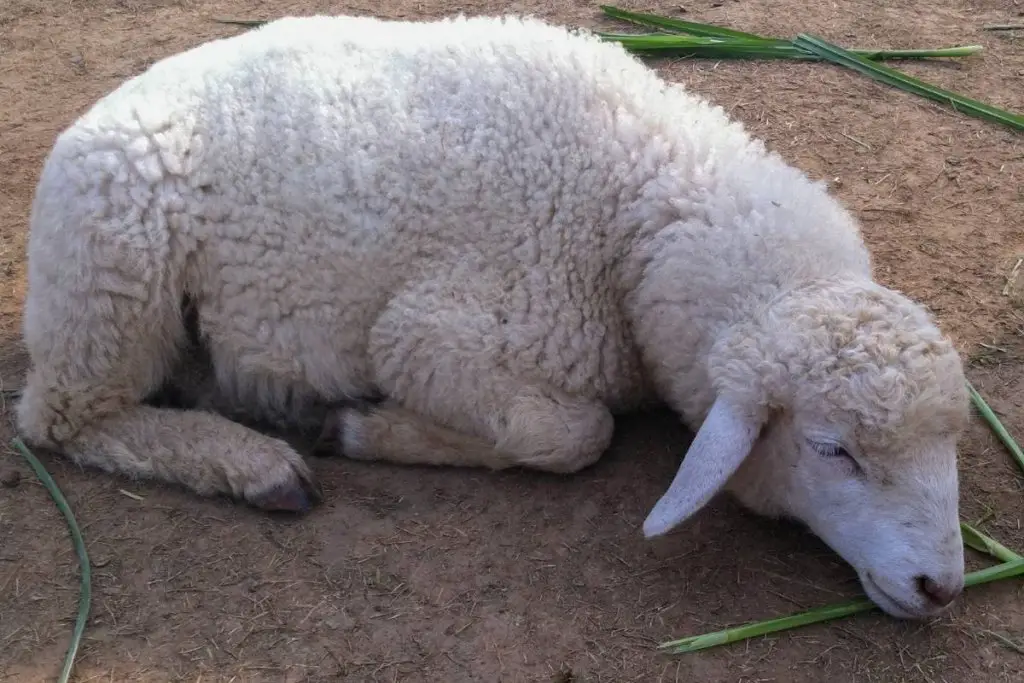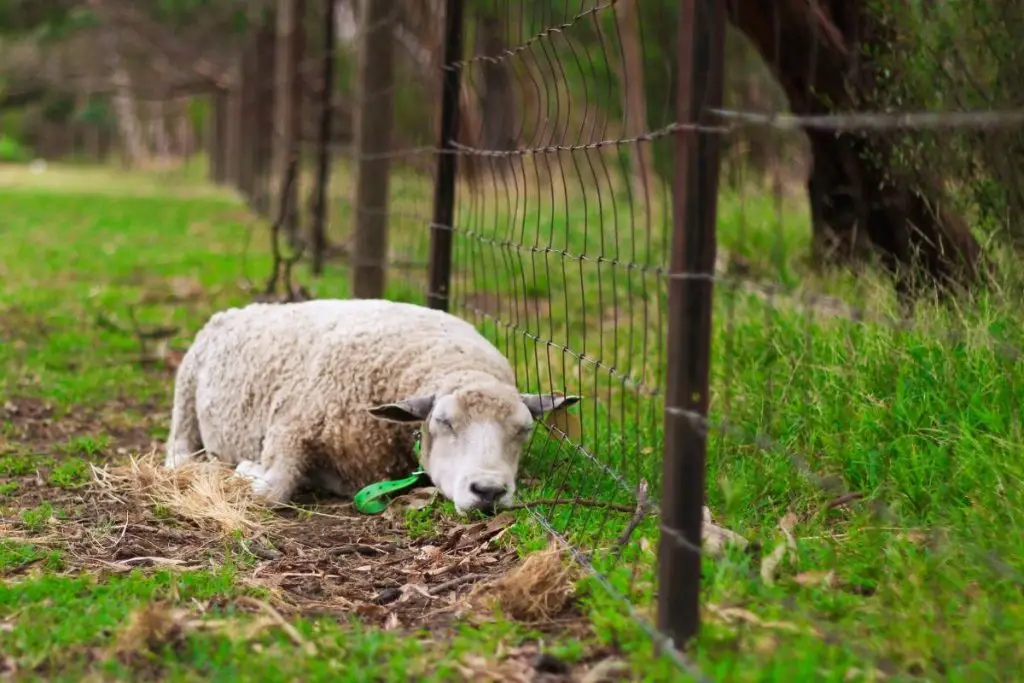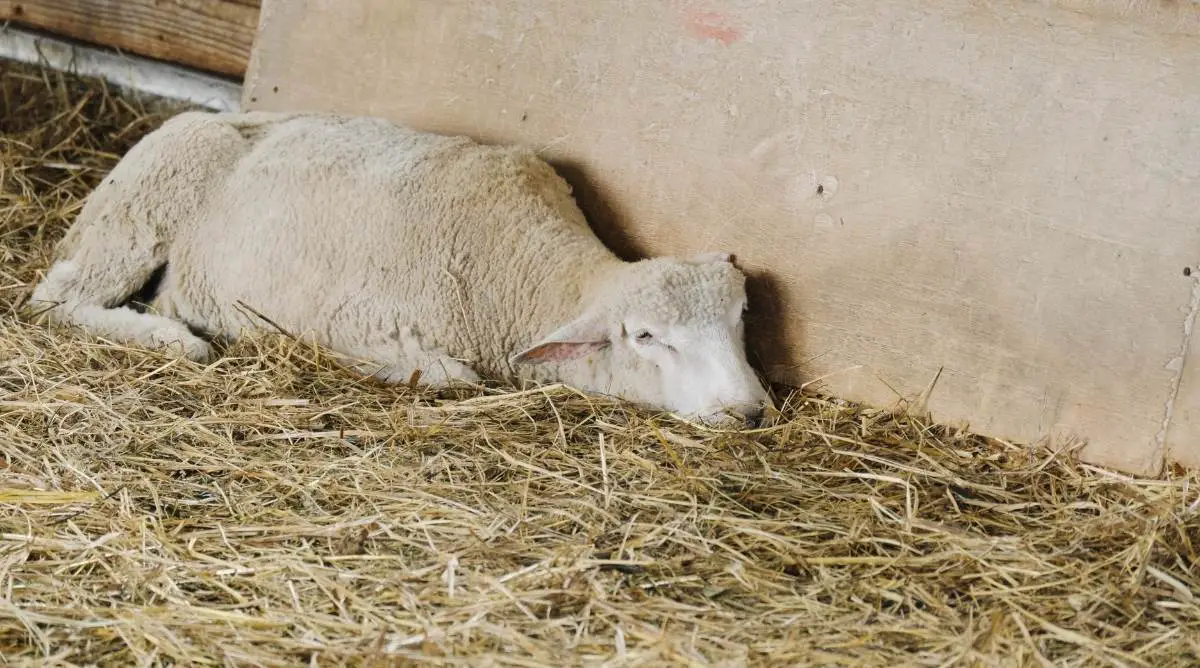Enterotoxemia in sheep, also known as overeating disease, causes sheep to be lethargic and stop eating, among other symptoms. A change in diet often triggers it—for example, an increase in grain consumption. Enterotoxemia progresses quickly and can be fatal.
Table of Contents
What is enterotoxemia?
Enterotoxemia is a condition where bacteria reproduces quickly in a sheep’s gastrointestinal tract, causing toxins to be produced in excess.
The intestines then absorb those toxins through antibodies. Young sheep are the most susceptible.
Enterotxemia is commonly caused by Clostridium perfringens type D or Clostridium perfringens type C.
How does enterotoxemia affect sheep?

Symptoms of enterotoxemia in sheep include:
- Loss of the ability to stand
- Low appetite or no eating
- Signs of stomach pain
- Crying and panting
- Lethargy
- Diarrhea
Enterotoxemia progresses quickly and can cause rapid death.
Although enterotoxemia is commonly known as the “overeating disease,” this is a misnomer. Enterotoxemia does not cause sheep to overeat, and in fact, symptoms include loss of appetite. Enterotoxemia is also not exactly caused by overeating. Instead, it is often triggered by a change in diet.
Type C enterotoxemia is often seen in lambs that are smaller than three weeks of age. Type D enterotoxemia is seen more in mature ewes and rams.
Diagnosing enterotoxemia
A diagnosis of enterotoxemia is based on:
- presence of clinical signs
- confirmation through a necropsy
The diagnosis is confirmed by testing the intestinal contents or feces taken from the postmortem examination, as well as an anaerobic culture.
An exploration of the intestine may reveal blood, clots, and the presence of little ulcers on the mucosa. The sheep’s brains may suffer from encephalomalacia. Kidneys may take on a soft and pulpy consistency with necrosis of the proximal tubules.
Doing a PCR test for C. perfringens can also help to confirm the diagnosis.
What causes enterotoxemia in sheep?

Enterotoxemia bacteria are normally dormant in the large and small intestine. They are triggered by a change in a sheep’s diet:
- protein supplement
- grain
- milk
These types of food are rich in carbohydrates and/or protein. However, enterotoxemia can even be triggered by eating grass.
Other factors that increase susceptibility to enterotoxemia include:
- lowered immunity (such as recovering from an illness)
- the presence of many parasites in the animals (such as nematodes, coccidia, and tapeworms)
- a diet that is low in roughage but high in grains
Enterotoxemia type C vs type D
- Type C enterotoxemia produces a beta toxin that causes damage and commonly causes the death of lambs younger than two weeks of age.
- Type D enterotoxemia produces an epsilon toxin that causes damage in lambs older than two weeks. Over-consumption of grains or a change in diet can cause type D to proliferate.
Prevention and treatment
If caught early enough, some sheep may respond to a C. perfringens antitoxin.
Antibiotics may be given, as well as probiotics to encourage the microflora in the gut to repopulate.
Prevention of enterotoxemia is more successful than treatment. Routine vaccination for C. perfringens in lambs has been shown to be very effective. Vaccinated animals still need a booster vaccination 3-4 weeks after the initial vaccination.

